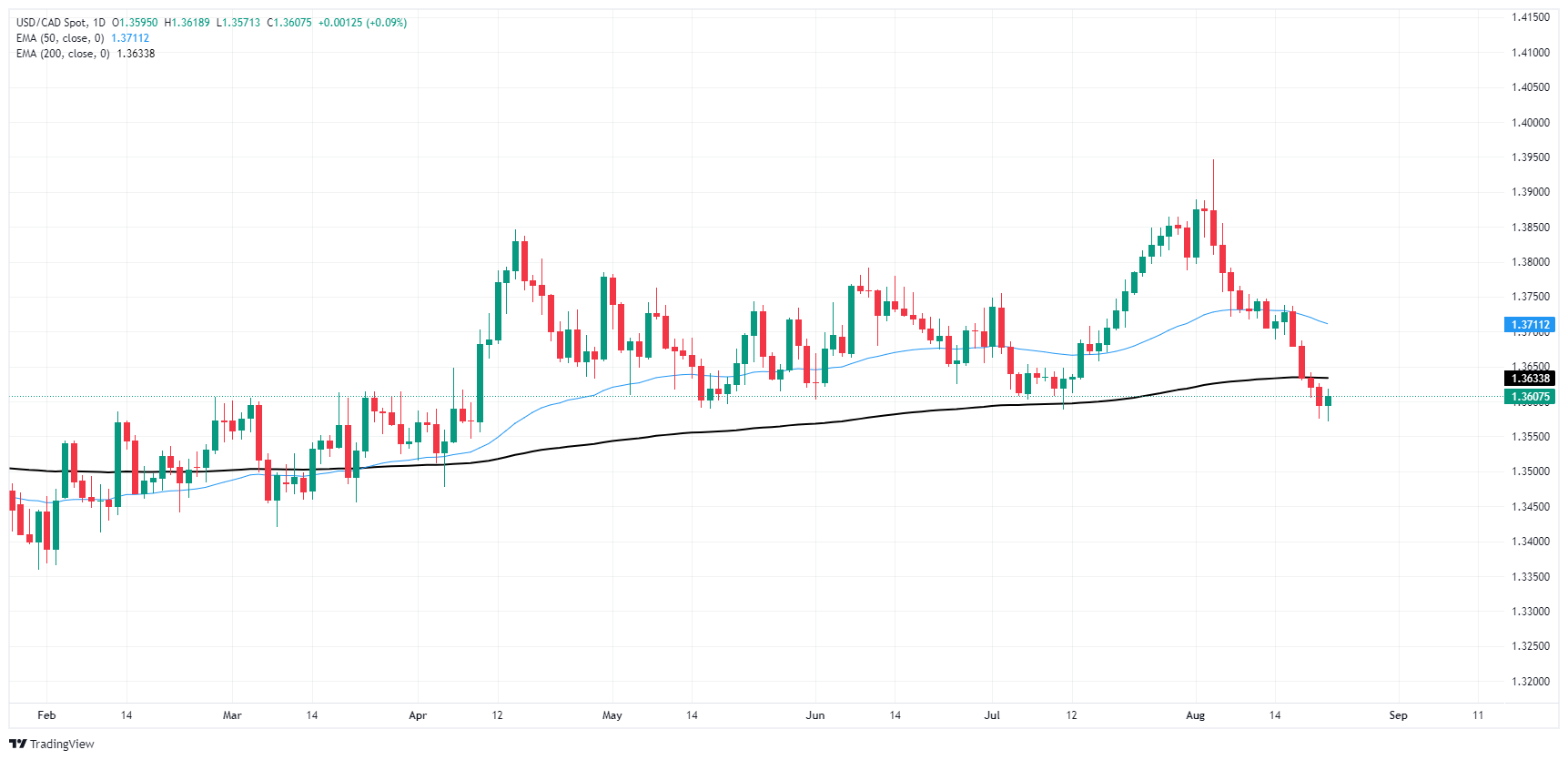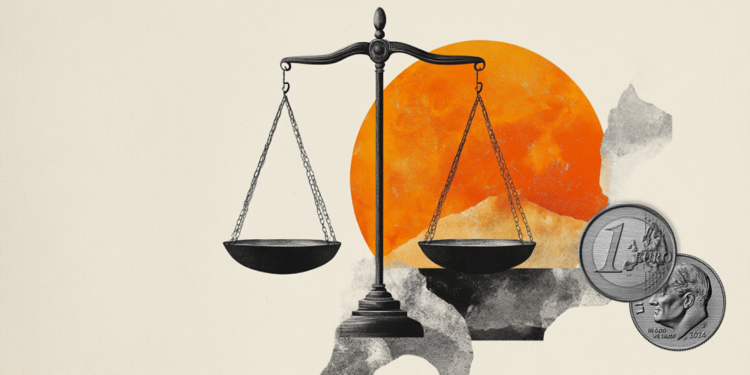- The Canadian dollar rallied broadly on Thursday, but lost ground against the US dollar.
- Canada saw a decline in applicants for employment insurance.
- Disappointing US PMI figures send the US Dollar higher overall.
He Canadian Dollar (CAD) The pair has largely regained its footing against most of its major currency pairs, but a broad-based swing back to the US Dollar sent USD/CAD bids higher in the second half of the trading week. The pair has snapped a recent winning streak, triggered by a shake-up in overall market sentiment.
Canada saw a pullback in June Employment Insurance beneficiary change figures, which helped lift the CAD on the day. However, a miss in the US Purchasing Managers Index (PMI) figures sent the US Dollar higher across the board, putting a cap on the Canadian Dollar’s gains on Thursday.
Daily summary of market drivers
- The change in Canadian Employment Insurance beneficiaries rose 1.3% month-on-month in June, slowing the previous month’s 1.9% increase in jobless benefit claimants.
- US manufacturing PMI figures contracted to 48.0 in August, below the expected 49.6.
- The US services PMI component rose to 55.2 from 55.0, beating expectations for a drop to 48.0, but an overall decline in employment numbers reported in the PMI reports still weighed on risk sentiment on Thursday.
- Markets are still expecting action from the Federal Reserve (Fed) in September, with rate markets pricing in a 100% chance of at least some sort of cut on September 18.
- Bets on an initial double 50-basis-point cut to kick off a rate-cutting cycle have declined to less than 25% after Thursday’s PMI miss, from nearly 70% a week ago.
Canadian Dollar Price Forecast
A broad-based recovery in US Dollar bids has snapped a winning streak for the Canadian Dollar (CAD), pricing a bullish candle in the USD/CAD pair for the first time in a week. The price action had initially dipped below the 200-day exponential moving average (EMA) at 1.3633, but Thursday’s bullish break has the pair primed for a technical congestion pattern before facing another turn in the bullish wheel.
USD/CAD Daily Chart
Canadian Dollar FAQs
The key factors determining the Canadian dollar (CAD) are the level of interest rates set by the Bank of Canada (BoC), the price of oil, Canada’s main export, the health of its economy, inflation and the trade balance, which is the difference between the value of Canadian exports and its imports. Other factors include market sentiment, i.e. whether investors are betting on riskier assets (risk-on) or looking for safe assets (risk-off), with risk-on being positive for the CAD. As its largest trading partner, the health of the US economy is also a key factor influencing the Canadian dollar.
The Bank of Canada (BoC) exerts significant influence over the Canadian dollar by setting the level of interest rates that banks can lend to each other. This influences the level of interest rates for everyone. The BoC’s main objective is to keep inflation between 1% and 3% by adjusting interest rates up or down. Relatively high interest rates are generally positive for the CAD. The Bank of Canada can also use quantitative easing and tightening to influence credit conditions, with the former being negative for the CAD and the latter being positive for the CAD.
The price of oil is a key factor influencing the value of the Canadian dollar. Oil is Canada’s largest export, so the price of oil tends to have an immediate impact on the value of the CAD. Generally, if the price of oil rises, the CAD rises as well, as aggregate demand for the currency increases. The opposite occurs if the price of oil falls. Higher oil prices also tend to lead to a higher probability of a positive trade balance, which also supports the CAD.
Although inflation has traditionally always been considered a negative factor for a currency, as it reduces the value of money, the opposite has actually occurred in modern times, with the relaxation of cross-border capital controls. Higher inflation typically leads central banks to raise interest rates, which attracts more capital inflows from global investors looking for a lucrative place to store their money. This increases demand for the local currency, which in Canada’s case is the Canadian dollar.
The released macroeconomic data measures the health of the economy and can have an impact on the Canadian Dollar. Indicators such as GDP, manufacturing and services PMIs, employment and consumer confidence surveys can influence the direction of the CAD. A strong economy is good for the Canadian Dollar. Not only does it attract more foreign investment, but it can encourage the Bank of Canada to raise interest rates, which translates into a stronger currency. However, if the economic data is weak, the CAD is likely to fall.
Source: Fx Street
I am Joshua Winder, a senior-level journalist and editor at World Stock Market. I specialize in covering news related to the stock market and economic trends. With more than 8 years of experience in this field, I have become an expert in financial reporting.







